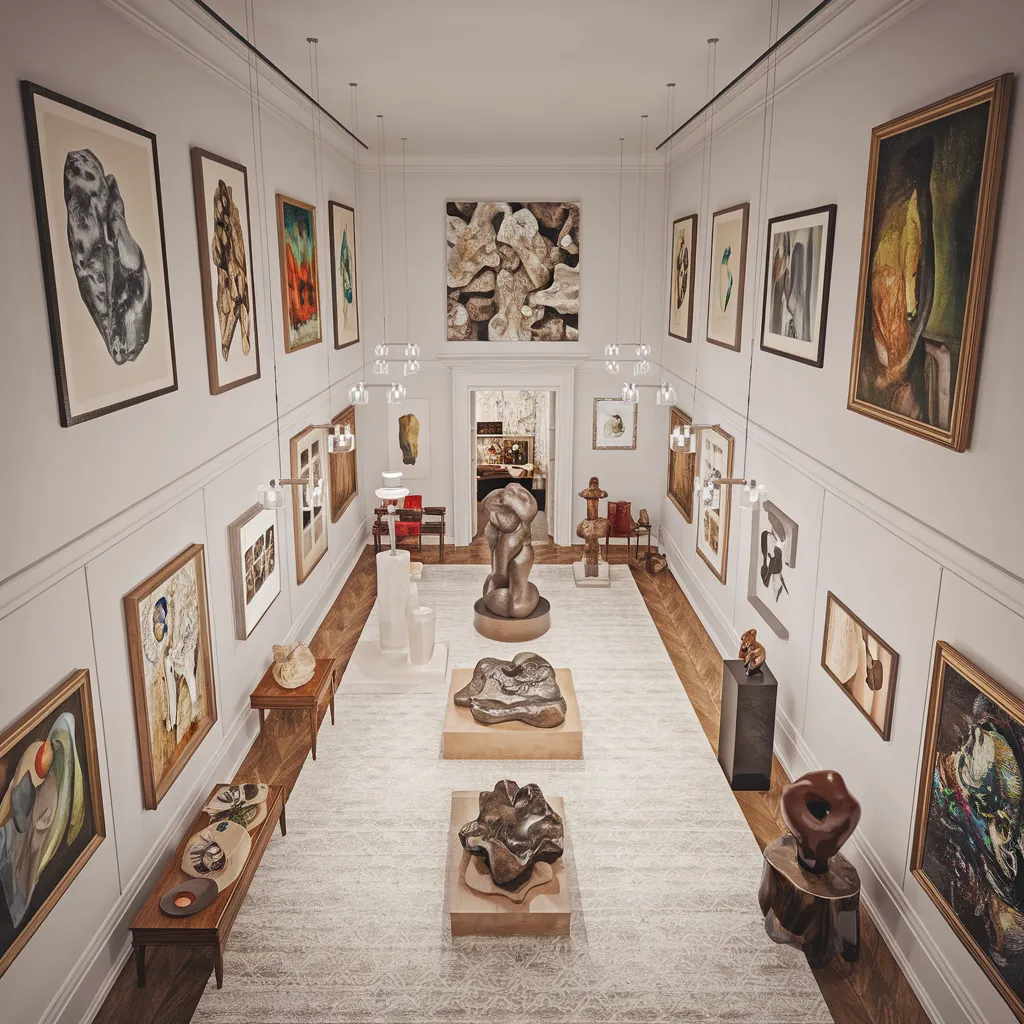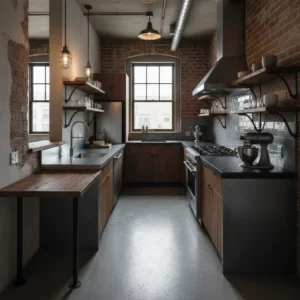Transforming a space into a captivating gallery is an art form in itself. From the strategic placement of each piece to the harmonious interplay of light and shadow, every decision shapes the viewer’s experience. Join us on a journey through the nuances of art curation, where we’ll unravel the secrets to creating awe-inspiring displays that elevate your treasured artworks.
Unveiling the Art of Hanging Masterpieces
The art of hanging masterpieces is a delicate dance between aesthetics and practicality. Each piece, a symphony of colors and textures, deserves a stage that amplifies its beauty while safeguarding its integrity. In this captivating exploration, we’ll unveil the secrets to curating breathtaking displays that transform ordinary walls into immersive galleries, inviting viewers to lose themselves in the depths of artistic expression.
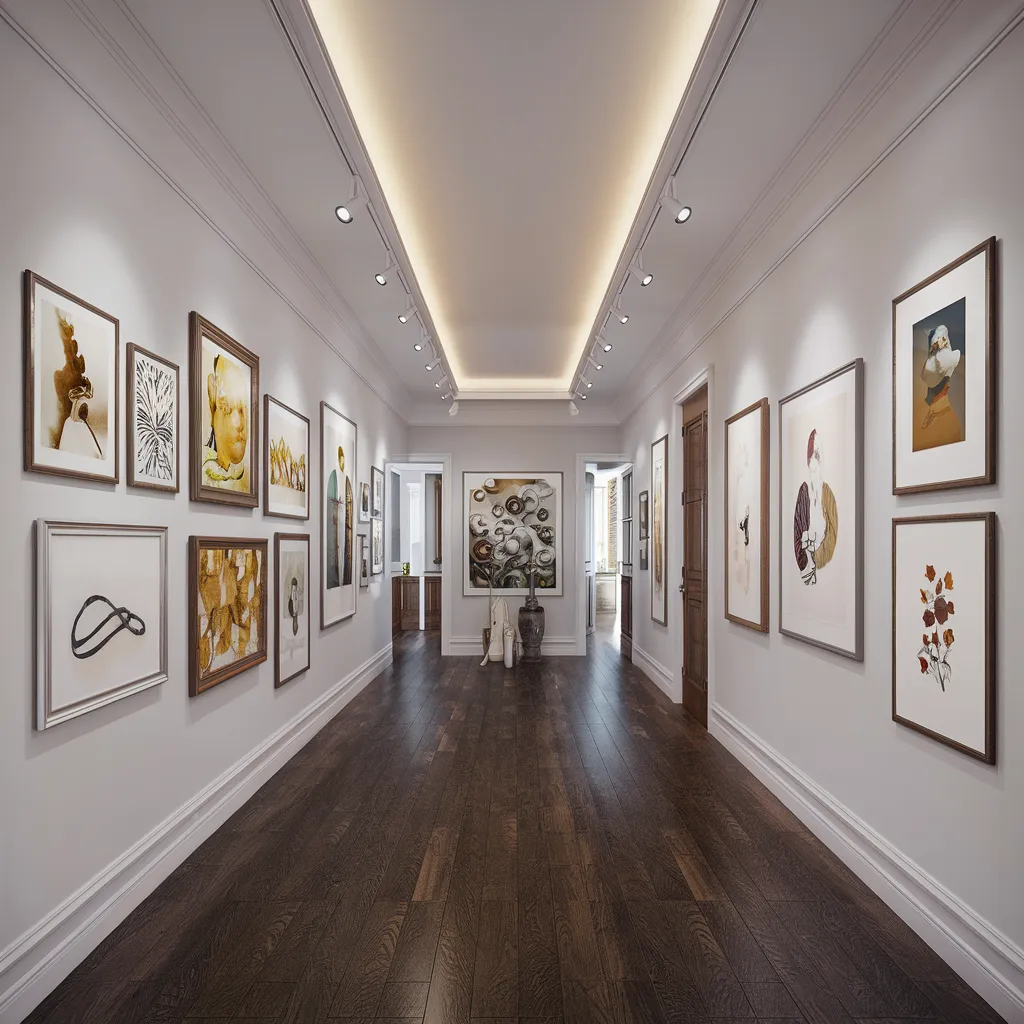
This elegant hallway exemplifies the art of hanging masterpieces—a perfect balance of design and emotion. Warm white walls provide a neutral canvas, allowing each artwork’s textures and tones to sing. The deep walnut flooring grounds the space, while recessed and track lighting sculpt depth and highlight subtle details. Thoughtful spacing and mixed frame finishes create rhythm and harmony, transforming the corridor into a serene gallery where art and architecture converse in perfect symmetry.
Where Not to Hang: Safeguarding Your Treasures
While the allure of adorning every nook and cranny with art may be tempting, certain spaces demand caution. Bathrooms and areas with high humidity can wreak havoc on your cherished pieces, leading to discoloration, mold, and peeling – a curator’s nightmare. Similarly, rooms bathed in direct sunlight, especially those facing south, can cause fading and color changes over time, robbing your artworks of their vibrancy. Exercising restraint in these environments is key to preserving the timeless beauty of your collection.
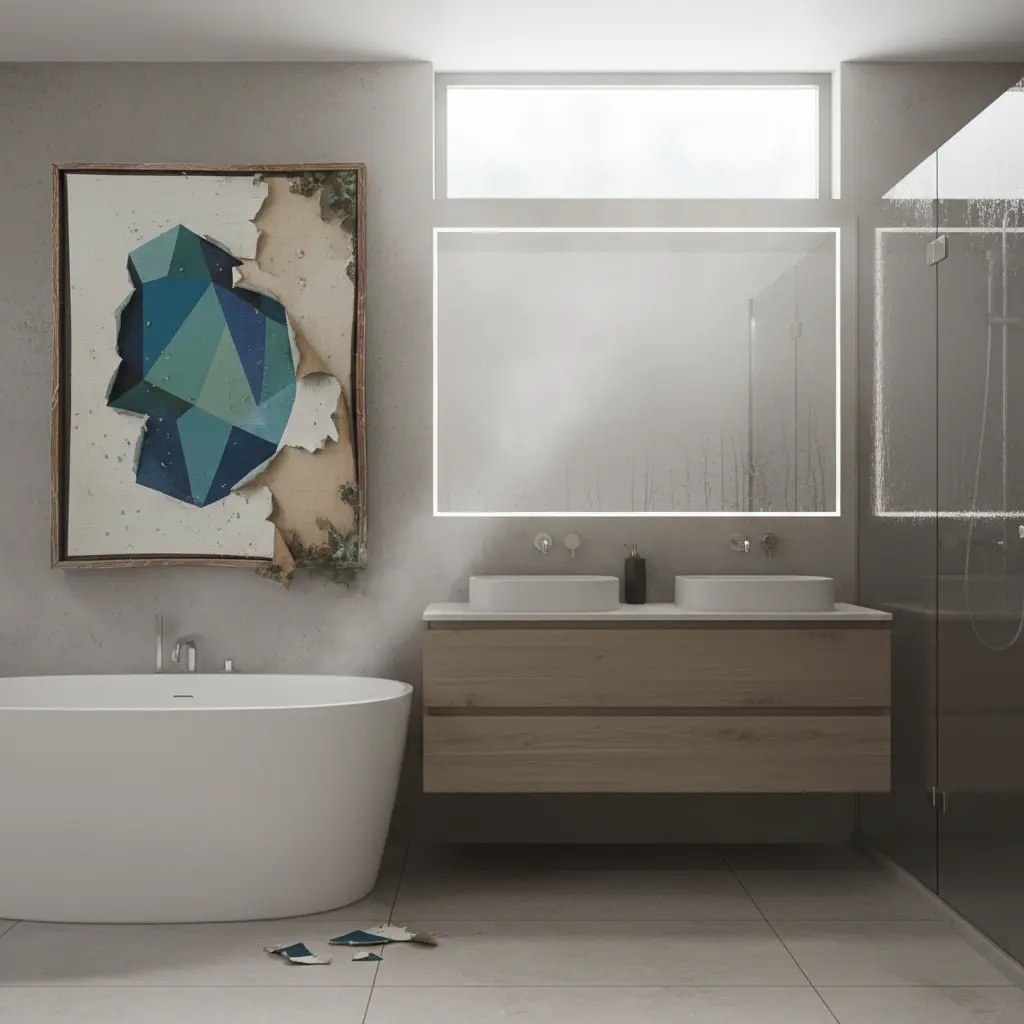
This modern bathroom features sleek, minimalist design with clean lines and contemporary fixtures. The high humidity has caused visible damage to the artwork hanging on the wall, with moisture visibly peeling the paint and warping the frame. Steamy air and water droplets on the tiled surfaces emphasize the unsuitable environment for art preservation. The cool color palette of whites, grays, and metallic accents is contrasted by the warm, deteriorating artwork. This scene demonstrates how even well-designed modern spaces can pose risks to delicate items when environmental conditions aren’t properly controlled.
Basking in Radiance: Mastering Sunlight’s Dance
While direct sunlight can be a foe, embracing its radiance with finesse can elevate your displays to new heights. Consider shaded areas like bookshelves or strategically placing UV-tinted window film to filter harmful rays. For unprotected fine art, a UV protectant coating can be a lifesaver, shielding your pieces from the sun’s relentless assault. By mastering the delicate dance between light and art, you’ll create an environment where your masterpieces can bask in their full glory.
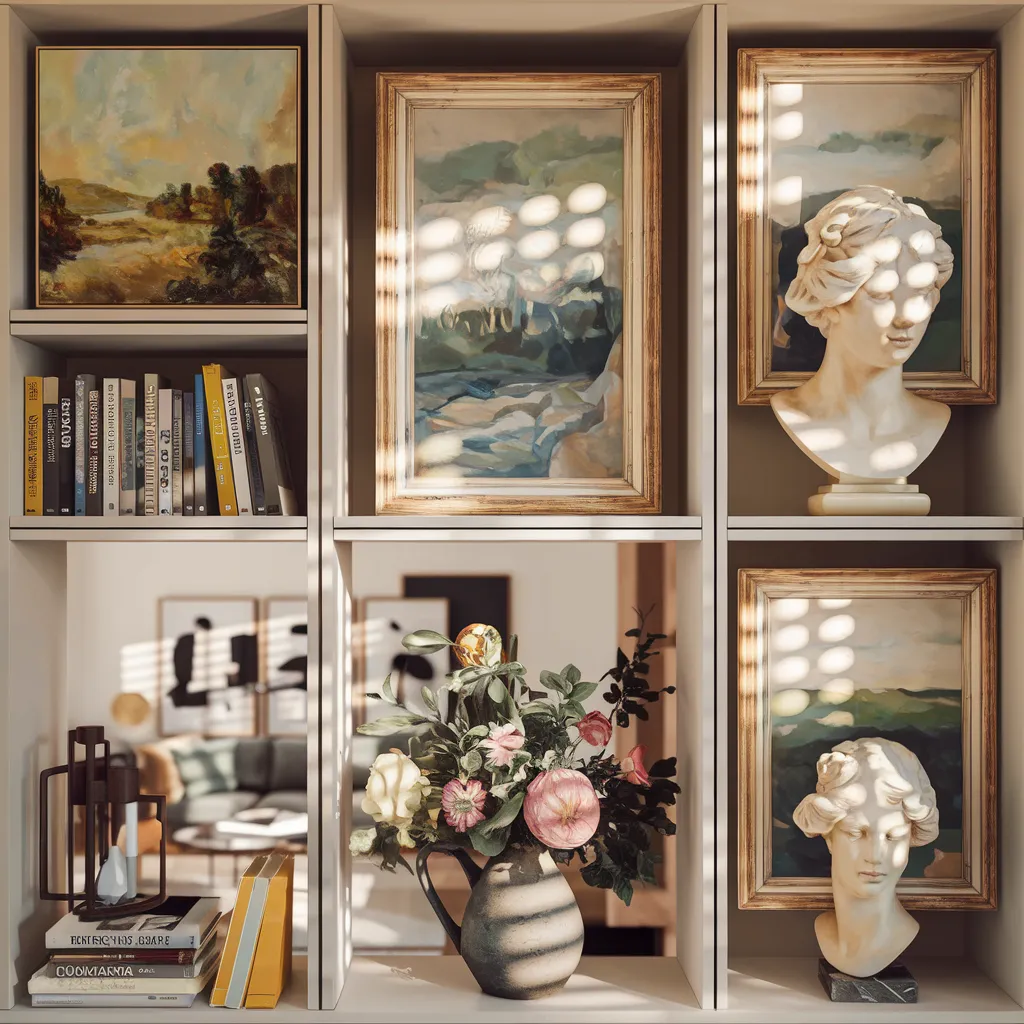
Bathed in warm natural light, this arrangement of framed paintings, sculptural busts, and carefully curated books exemplifies refined elegance. The interplay of soft shadows and golden tones accentuates the textures of wood, plaster, and canvas. Muted greens and earthy neutrals balance the scene, highlighting how filtered sunlight can enhance depth without compromising preservation.
The Hearth’s Allure: Striking a Delicate Balance
The allure of hanging art above a crackling fireplace is undeniable, but this enchanting setting comes with its own set of challenges. The heat emanating from the hearth can wreak havoc on your artworks, leading to color changes, warping, and even cracking. If you simply can’t resist the temptation, ensure your pieces are hung high enough to create a buffer zone from the heat source, avoiding a disconnected appearance. Textured artworks often complement fireplaces better than reflective pieces, adding depth and dimension to the space.
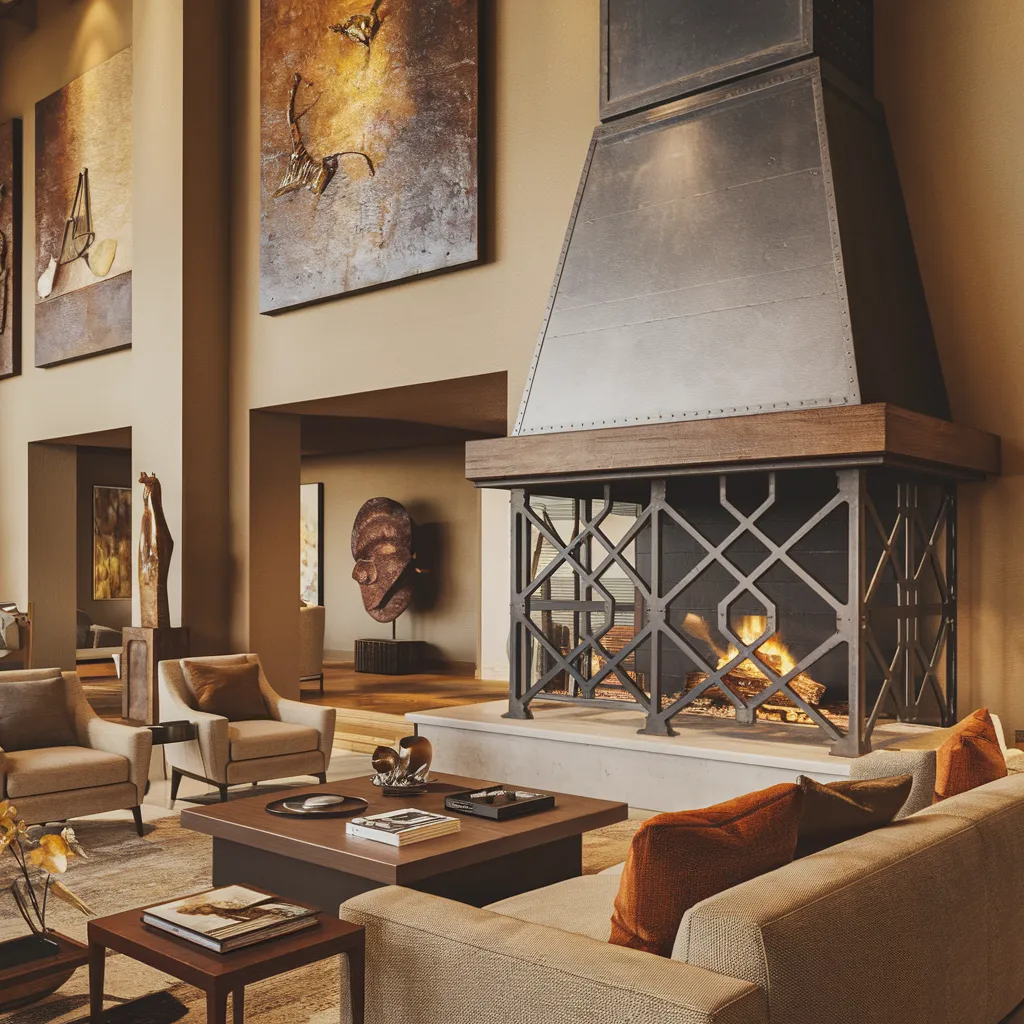
A rich palette of amber, bronze, and deep taupe defines this luxurious living space, where plush textiles and metallic accents meet the rugged charm of a steel-framed fireplace. The tactile contrast between warm leather, coarse linen, and burnished metal infuses the room with both comfort and structure. Artworks echo the earthy tones of the interior, complementing the fire’s glow with sculptural warmth.
Navigating the Rhythms of High-Traffic Havens
High-traffic areas like entryways, narrow hallways, and stairways present their own set of challenges for art enthusiasts. While these spaces offer prime real estate for showcasing your collection, the risk of accidental bumps and damage looms large. To strike a balance, consider hanging your pieces higher than usual, ideally above the 60-inch mark, creating a safe haven for your artworks while still allowing them to captivate passersby. Alternatively, multi-piece gallery walls can add visual interest and rhythm to these spaces, transforming them into dynamic exhibitions.
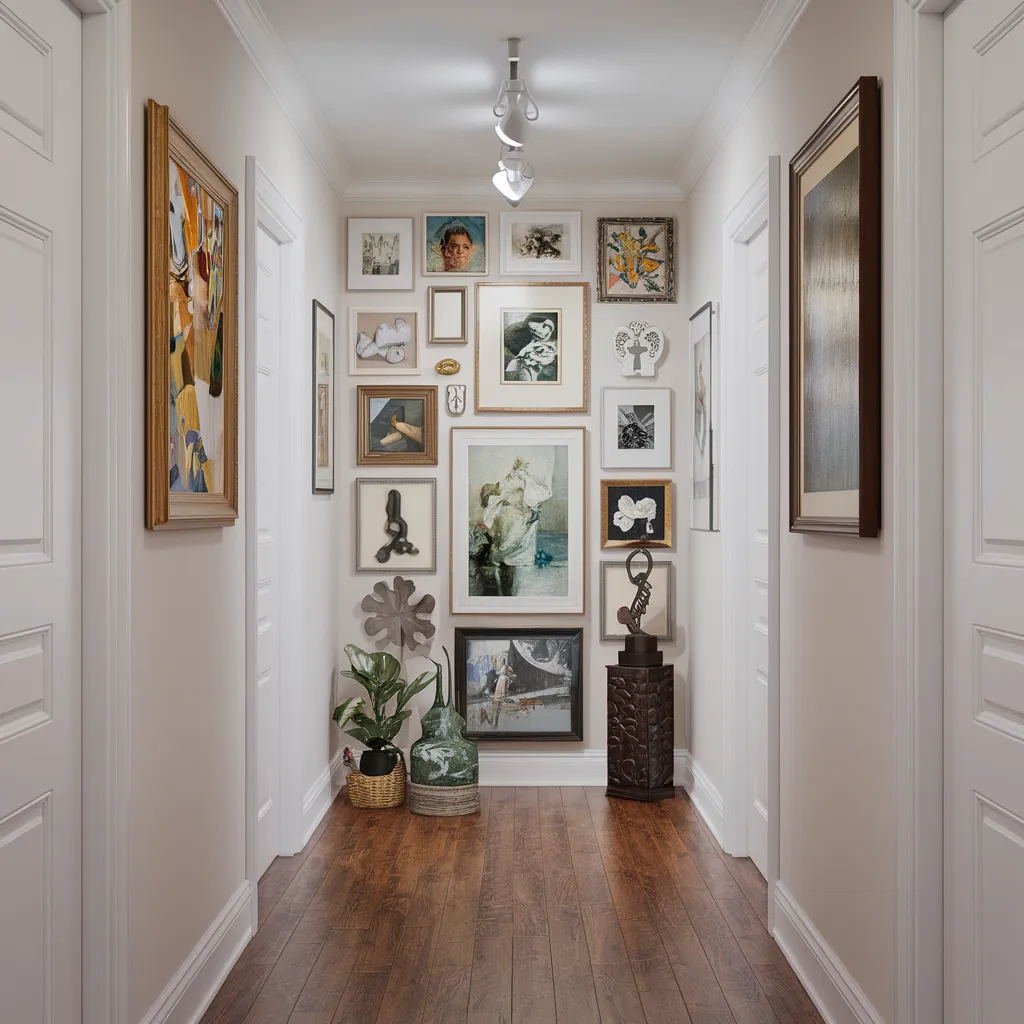
A sleek hallway transformed into a modern gallery, featuring crisp white walls, dark wooden flooring, and soft recessed lighting. The variety of framed artwork—ranging from abstract to botanical—creates rhythm and sophistication along the corridor. The neutral backdrop allows textures, brushstrokes, and color palettes to shine, illustrating how thoughtful spacing and height elevate high-traffic art displays.

